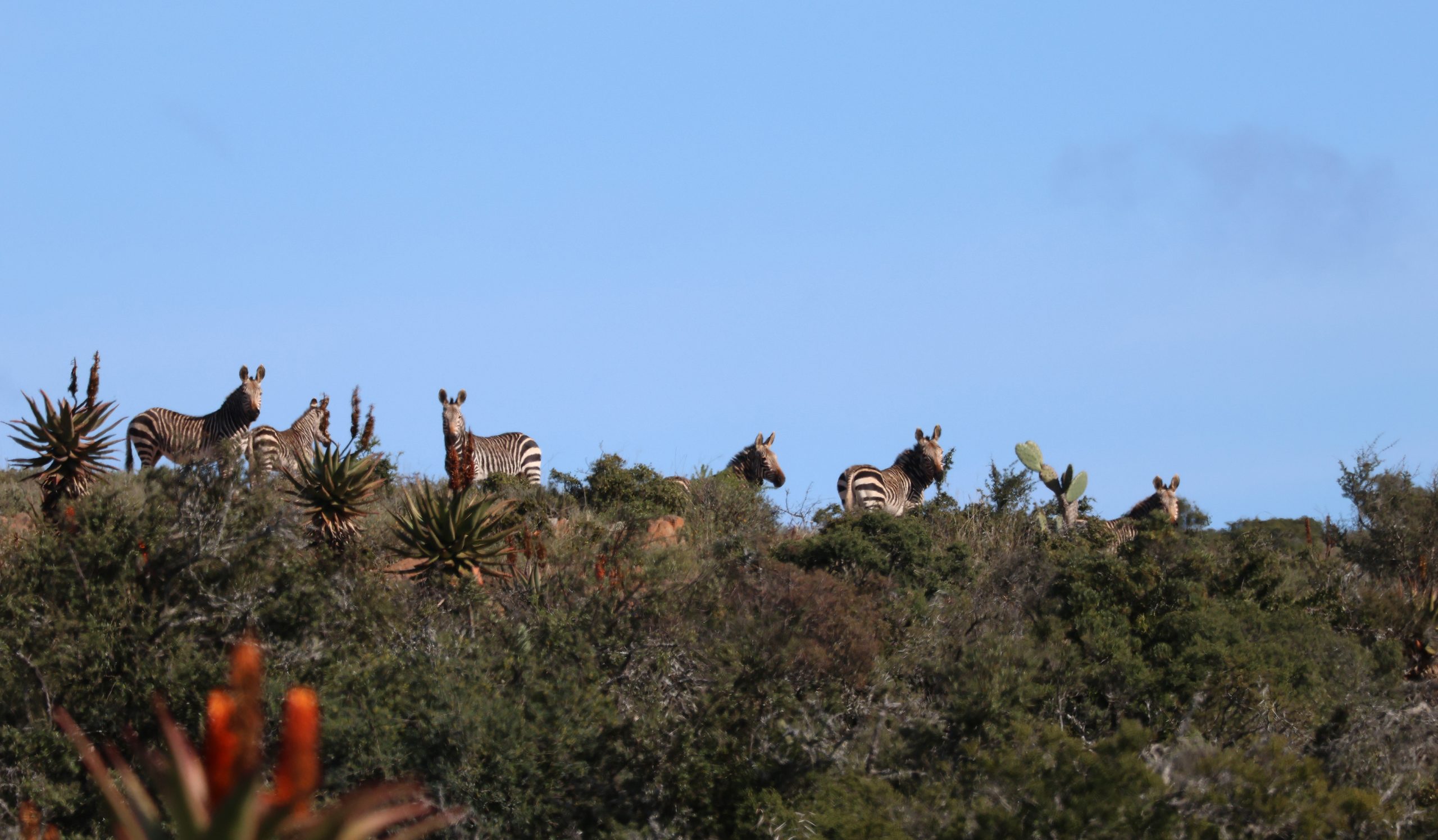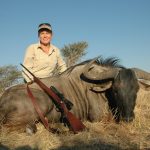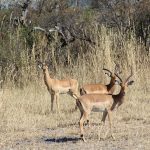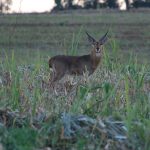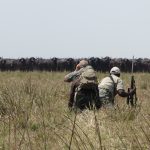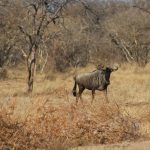Africa has several types of zebras, each of them of a slightly different stripe.
Photo above: A family group of Cape mountain zebras, in typical mountain habitat in South Africa’s Cape Mountains. Both Hartmann mountain and Cape mountain zebras are typically found in small family groups, rarely in larger herds.
Is there a more recognizable African animal than the zebra? I’m fascinated by the similar—yet so different—striping patterns in different types of zebras. It took me forty years, but I’ve seen all the recognized species, subspecies, and races of zebras. The last was the Sudan maneless zebra, which is not exactly maneless, but with a distinctively short mane. They are starting to drift into Uganda from Sudan’s far-southeast East Equatoria Province. I saw some in Uganda’s Karamoja District in 2017, and got some excellent photographs of a small group there in 2021.
It would be silly to try to hunt all the zebras. There are differences, but few people in your neighborhood would remark on the different striping. Also, it can’t be done. The Sudan maneless zebra is protected, as it should be. Likewise, so is the pin-striped, big-eared, distinctly different Grevy zebra. Licenses were available when I hunted in Kenya, but we didn’t get up into the far north where they occur. Joe Bishop and I saw quite a few Grevy zebra in Ethiopia’s Danakil Depression in 2000, but they were off-license and protected.
So, you won’t catch me talking about a “zebra slam.” However, regardless of where you are hunting in Africa, or which set of stripes you are looking at, I recommend a zebra be included on a first-safari wish list. Yeah, I recognize that horse-lovers have issues. Okay, but the zebra is not the same animal as a horse. With keen senses and surprisingly effective natural camouflage (in shadows and brush), the zebra is not easy to hunt. Also, it can be the very Devil to sort out a stallion, which is usually the goal.
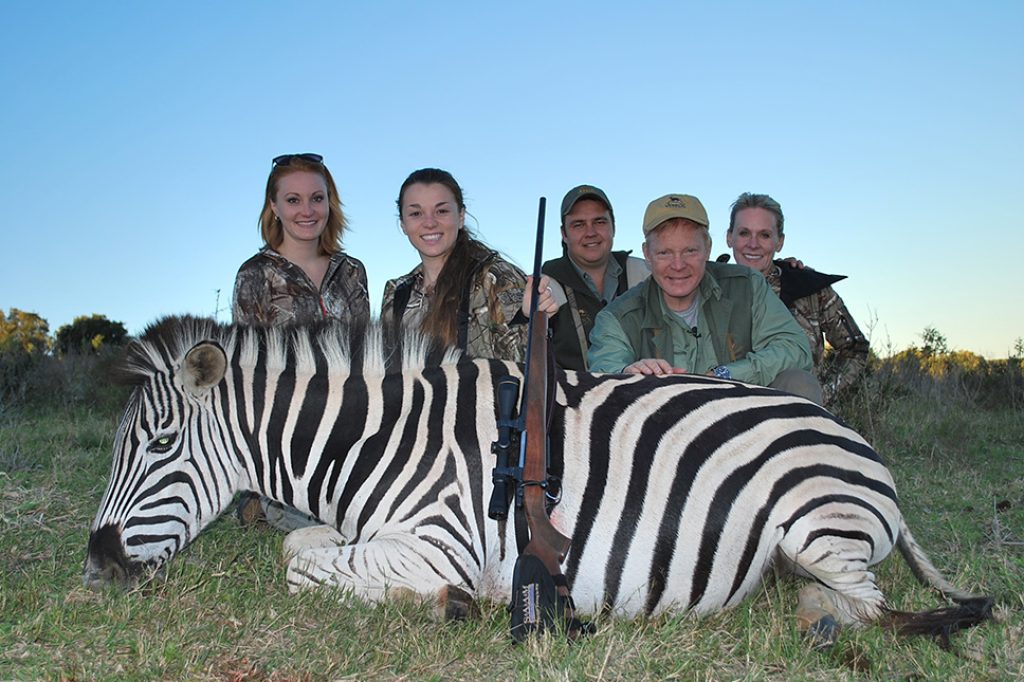
My two daughters, Brittany and Caroline, both put zebras at the top of their wish lists on their first African hunts. Must have listened to my propaganda. Like many young ladies, they were horse-lovers, but wanted zebra rugs…and both were surprised at how difficult it was to get close, find the right animal, and get clean shots.
According to current thinking, there are three species of zebra, all in the Equus genus: Plains zebra, E. quagga; Grevy’s zebra, E. grevyi; and mountain zebra, the type specimen, E. zebra. Without question, my favorite zebra has long been Namibia’s Hartmann mountain zebra. Large-bodied, with distinctive “Christmas tree” rump markings, the best thing about the Hartmann zebra is that it offers a marvelously fun and often difficult hunt in their native mountains along the spine of central Namibia.
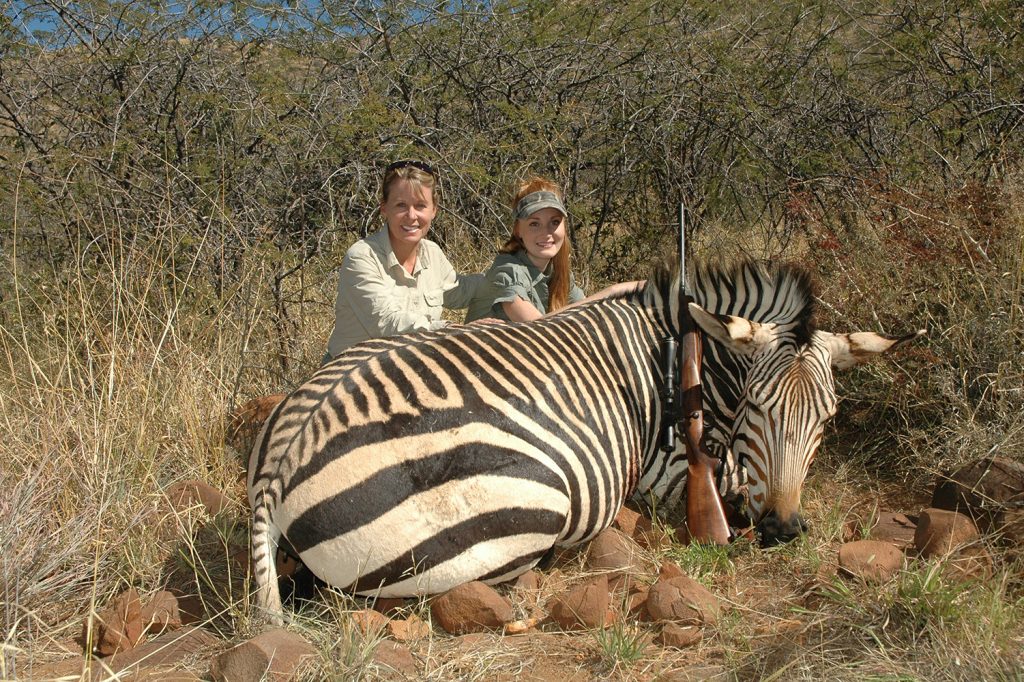
Today, it isn’t always a mountain hunt. Hartmann zebras have been widely introduced, and are now often found on the same properties with common, plains, or Burchell zebras. There’s probably no harm, because they don’t seem to interbreed, but hunting them is not the same experience. I saw a Hartmann zebra on my first hunt in Namibia in 1979, a lone stallion far up on a mountain. I was enthralled; back then the Hartmann zebra was uncommon.
In 1981, Ben Nolte and I started from the bottom, climbed the spine of the Erongo Mountains, heard zebras whistling, worked in above them. Looking straight down on a small group, it took us forever to be certain which was the stallion. I was shooting a Ruger No. 1 in .375 H&H.
Since then, I’ve taken a couple more, always a great hunt in genuine mountains where they are native. Hunting with Mare van der Merwe at his African Twilight outfit southwest of Windhoek, we hiked far up into the mountains and Donna took a big stallion from one canyon to another. As she likes to say, “No girl can have too many zebras.”
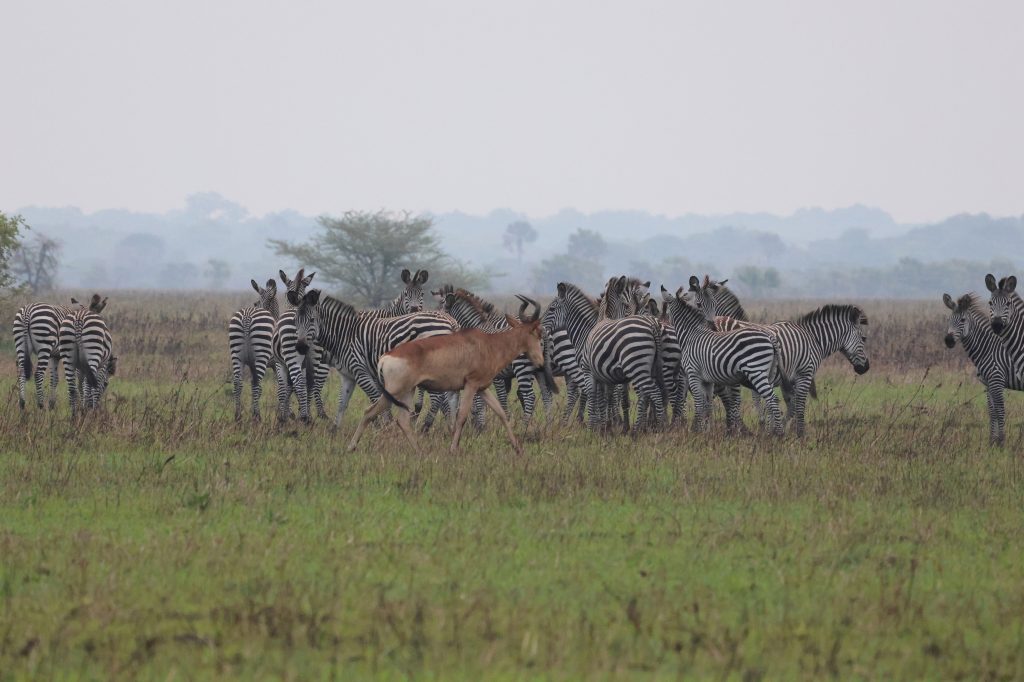
There are several races of plains zebra, some regional and arguable, somewhat confused by the late nineteenth century colonial race, when everyone wanted an animal named after them. Significant variations include pure black-and-white striping, like the Grant zebra of East Africa; and the gray shadow stripes of the Burchell.
There are two mountain zebras: The more common Hartmann mountain zebra (E. z. hartmannae), primarily in Namibia, but extending into southwestern Angola and introduced into northwestern South Africa. Then, there’s the Cape mountain zebra, E. z. zebra, identified in Cape Colony before Europeans set foot in now-Namibia. I saw some at a distance years ago but wouldn’t have a chance to appreciate the differences until I shot one, in 2023. Here’s the big visual difference between the mountain varieties and all plains zebras: With mountain zebras, vertical body stripes stop low on the flanks. With plains zebras, stripes continue to the belly line.
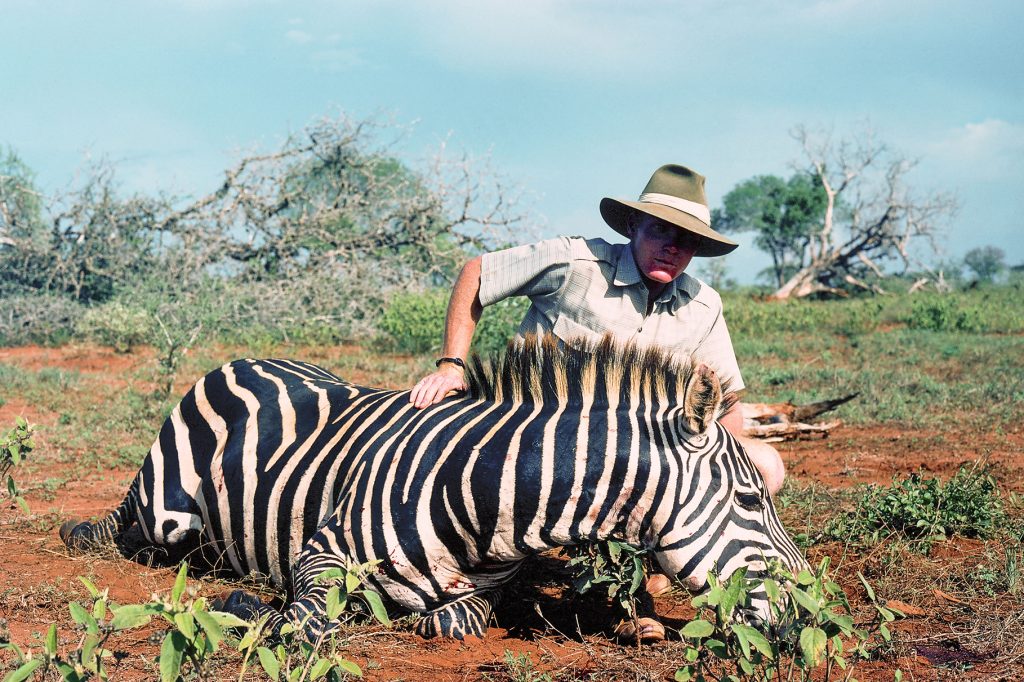
References suggest the Cape mountain zebra is the smallest zebra. Maybe, but the Selous zebra of coastal Mozambique (and formerly, Malawi) is noticeably smaller than other plains zebras. I’ll give you that the Cape mountain zebra is smaller than Hartmann…but not by so much. It was apparently always restricted to a small range in rough country straddling South Africa’s Eastern and Western Cape provinces. Like several other indigenous South African species—blaubok, bontebok, black wildebeest, quagga—the Cape mountain zebra was almost extirpated during the settlement era. The bontebok, Cape mountain zebra, and black wildebeest were saved from extinction only by a few farmers who had the last of their kind on their land and were forward-thinking enough to understand they should be conserved.
That wasn’t the end of the story. The Mountain Zebra National Park was established near Craddock in 1938, but that population died out by 1950. Fortunately, private conservation by a few landowners had continued. Zebras were reintroduced into the Park from neighboring farms, and genuine recovery began. Today there are not many, just a few thousand, in Mountain Zebra and other parks, and on private land.
It may seem unthinkable that such a scarce animal could be hunted, but it’s important to understand South Africa’s management system, which works. Nationwide, it has allowed a thirty-fold increase in wildlife in the last forty years. In South Africa, wildlife is largely privatized, at the discretion of the landowner. If it pays, it stays. If it doesn’t pay, there is livestock that will. With South Africa much like Texas, primarily private land, this system has worked well for wildlife.
The IUCN Redbook of Threatened Species has now declassified the Cape mountain zebra from Endangered to Vulnerable. US Fish and Wildlife takes a more rigid stance: Americans are not allowed to import Cape mountain zebras into the United States. This is unfortunate for the farmers who are protecting them and feeding them instead of more profitable species, wild or domestic.
The opportunity was unplanned and unexpected. In July 2023, I was hunting with Fred Burchell at the Burchell family’s Frontier Safaris in the Eastern Cape (yes, the Burchell zebra is named after a direct ancestor). Fred manages the taxidermy side, and he wanted a Cape mountain zebra for the lodge. It didn’t take much arm-twisting to talk me into it. The farm we went to was a couple hours farther east, deeper into the Cape mountains.
The older gentleman who owned the farm had a nice and growing herd of Cape mountain zebras. His harvest is conservative and sustainable at three or four per year. He could take a couple more, would like to. But in that region, most visiting hunters are Americans. Unable to export the skins, few wish to hunt them. For me, it was a rare opportunity. I knew I couldn’t take it home, but Fred wanted the skin.
We spent a couple of hours glassing and looking, seeing little, then spotted a lone zebra trotting over a ridge. We started climbing, saw the herd from the ridge-top, then hiked over a couple more ridges, me feeling the 6,000-foot elevation.
They held up in a tight valley, a small herd. We worked in to 250 yards and I set up against a stout, stubby tree, rifle over my pack. We thought we knew which zebra was the stallion, but we needed to be 100 percent certain. It (he?) didn’t move for long eternities, then finally two of the mares moved off to the right and the supposed stallion followed. Yes, for sure.
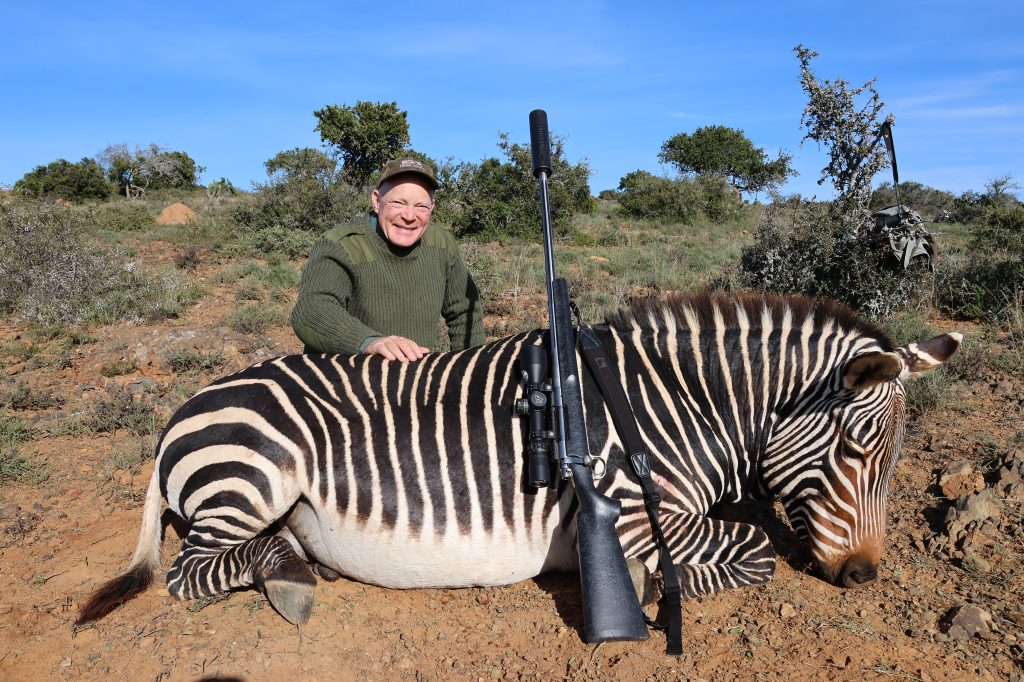
I was shooting Fred’s Remington M700 Sendero in 7mm Remington Magnum, plenty of gun for zebra, but I was concerned about the 150-grain bullet. Zebra stallions are large and tough, and we weren’t sure we’d have enough penetration for the classic broadside shoulder shot.
But we couldn’t have orchestrated it better. The now-for-sure stallion took a couple steps, and gave me a quartering-away shot. I pressed the trigger with the vertical crosshair in the crease behind the shoulder. He made two steps and was down.
Although a big stallion, he was somewhat smaller than most Hartmann zebras I’ve seen, gorgeous skin unscarred and perfect. Coloring was darker, body stripes very black. His face and “Christmas tree” were much like the Hartmann zebra. Most striking—as the books say—the jet-black rump stripes were broader than on any zebra I have seen. I wish I could take him home, but I can’t, and I think that’s short-sighted management. I was happy for the experience, and I’ll be back at Frontier Safaris. I look forward to visiting him there.


